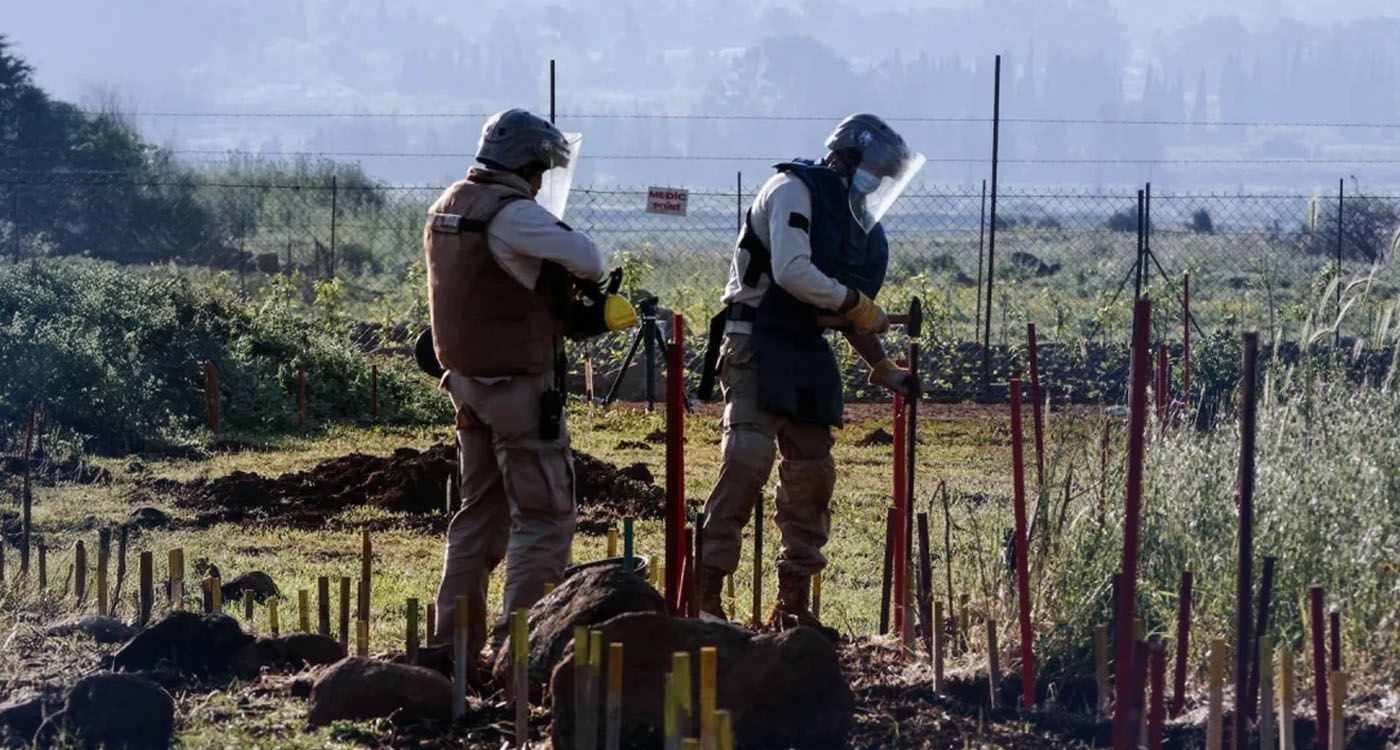
Haunted by thousands of landmines and unexploded ammunition, Lebanon faces a significant challenge: clearing a territory scarred by decades of conflict, the most recent being the 2024 war between Hezbollah and Israel. Triggered by Hamas’s October 7, 2023 attack on Tel Aviv, the conflict spilled over into Lebanon under the banner of “unity of fronts,” reigniting the issue. Today, new areas are contaminated with landmines and unexploded munitions, primarily affecting border regions and rural areas, which thousands of Lebanese were forced to flee to escape the violence.
The Scale of the Problem: How Much Land Remains Contaminated?
Identifying the exact extent of mine-contaminated areas in Lebanon remains a complex task, rendered more difficult by ongoing military operations, particularly along the Lebanese border. “By the end of 2023, we had cleared 84% of the contaminated areas,” an informed source said. However, they indicate that at that time, “demining teams were still tasked with clearing approximately 16 million square meters (out of a total of 26.68 million square meters at the start of 2023) that were still at risk.” Field studies are currently underway to reassess the situation and develop a new plan. Nonetheless, “demining operations are ongoing and proceeding alongside reassessment missions,” the source added.
Experts estimate that around 25% of the Lebanese territory continues to be affected by landmines and unexploded ammunition, with the most severe impacts observed in southern regions, particularly along the border with Israel and in the Beqaa Valley. The most heavily impacted areas are those adjacent to the Blue Line and rural regions in the south and east of the country.
Key Players in Mine Clearance in Lebanon
Mine clearance in Lebanon involves various stakeholders, including state institutions, non-governmental organizations (NGOs) and peacekeeping forces (UNIFIL).
The Lebanese Mine Action Center (LMAC), operating under the Ministry of Defense, is tasked with coordinating demining efforts. This structure collaborates with NGOs and international players to ensure the safety and reconstruction of contaminated areas.
Among the NGOs playing a crucial role in demining operations are MAG (Mines Advisory Group), an international organization specialized in mine detection, clearance and safety education and Handicap International, which has been operating in Lebanon since 2007, as well as Danish Church Aid and Norwegian People Aid..
The United Nations Interim Force in Lebanon (UNIFIL) also plays a role in mine clearance operations, particularly along the Blue Line. While its primary mission is to monitor the cessation of hostilities, UNIFIL assists in neutralizing mines and explosive devices.
The Demining Process
Mine clearance in Lebanon follows a meticulously regulated procedure, with several key stages. A typical process begins with the identification of contaminated areas. Geospatial surveys and field inspections are then conducted to locate high-risk zones, while information is gathered from local communities and authorities to pinpoint suspected sites.
Once an area is identified, experts carry out a risk assessment. This includes analyzing the types of mines present and determining the safest techniques required for neutralization. Various methods are employed by mine clearance teams to locate and defuse mines, including metal detectors, mine detection dogs, and other manual and mechanical methods. Mines are neutralized through controlled detonation or safe removal.
Once the mines are removed, further checks and inspections are conducted to ensure no residual risks remain. Clearance techniques are then applied to make the area safe and accessible for local residents. “An essential part of demining is educating the local population about the dangers of mines, which is why safety education programs are set up to prevent accidents,” stressed a security source.
Duration of Demining Operations
Mine clearance operations can span from a few months to several years, depending on the size of the area to be cleared and the complexity of the terrain. After major conflicts such as that of 2024, the process is even more stretched due to the need to clear newly contaminated areas. Furthermore, hard-to-reach urban or rural regions often complicate operations.
Given the slow pace of interventions and the high cost of necessary equipment, it is estimated that Lebanon would need around a year to fully clear all mines from the land and unexploded ammunition, according to the source. “Everything also depends on the funding required for this. Many authorities have promised to allocate funds for mine clearance, but we have received nothing so far,” the security source added.
Closely linked to demining operations is the critical issue of the return of displaced Lebanese to their homes, a matter of great concern. During the 2024 war, many inhabitants of border regions, notably those nearest to the border with Israel, were forced to flee their villages. Today, ongoing hostilities, coupled with the fear of mines and unexploded ammunition, hinder their swift return. Resolving this intricate problem requires the full implementation of the ceasefire agreement and the completion of demining operations, which is expected by next year.





Comments